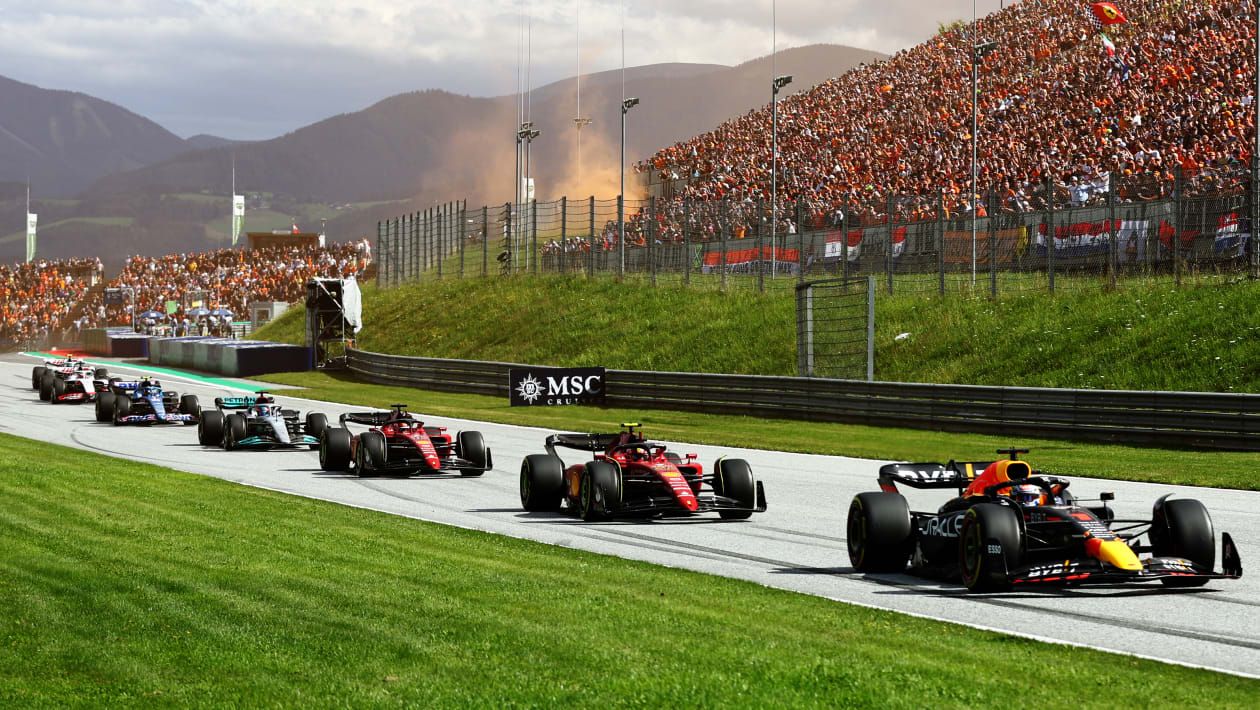Sprint Races in Formula 1: A Game-Changer for Weekend Thrills
In a sport known for its rich history and traditions, Sprint Races have emerged as a game-changer for Formula 1 weekends.

I. Introduction
Formula 1, the pinnacle of motorsport, has never been averse to change. The roar of powerful engines, the precision of aerodynamic designs, and the skill of world-class drivers have always been at its core. Yet, in recent times, a new element has been introduced into the sport, promising to elevate the weekend spectacle to greater heights. Enter Sprint Races. Sprint Races have emerged as a revolutionary addition to the Formula 1 calendar, designed to enhance the thrill and drama of race weekends. They are shorter, intense battles that take place in addition to the traditional Grand Prix, transforming the racing experience for both drivers and fans.
In this article, we delve into the exciting world of Sprint Races and their profound impact on Formula 1. We explore how these lightning-fast showdowns have breathed new life into race weekends, captivating the imagination of fans and challenging the strategies of teams and drivers alike. From the rules and regulations governing Sprint Races to the nail-biting tactics employed on the track, we'll uncover the dynamics that make these races a game-changer. We'll analyze their influence on championship standings, the reactions they've elicited from drivers and fans, and the controversies they've sparked. Moreover, we'll take a glimpse into the future to see how Sprint Races are poised to shape the ever-evolving landscape of Formula 1.
II. The Evolution of Formula 1 Weekend Format
The world of Formula 1 has always been a sport of innovation, adapting to the changing times while preserving its core essence of speed, skill, and strategy. Over the years, the format of a Formula 1 race weekend has seen several transformations. Traditionally, a race weekend comprised practice sessions on Friday, followed by qualifying on Saturday to determine the grid for Sunday's main event.
However, the need for more action and excitement led to a reevaluation of the weekend format. In 2021, a historic shift occurred with the introduction of Sprint Races. These Saturday showdowns were designed to provide a thrilling spectacle for fans and an additional opportunity for drivers to showcase their talents. The decision to incorporate Sprint Races was driven by a desire to enhance the overall fan experience. Formula 1 recognized the need for more action-packed moments throughout the race weekend, beyond the traditional race on Sunday. By adding Sprint Races to the schedule, the sport aimed to inject excitement into every day of the event, drawing fans closer to the action.
To test this new format, Formula 1 introduced the sprint races only in three weekends of the season. The 2021 season included Sprint Races in Silverstone (UK), Monza (Italy) and Interlagos (Brazil), while the 2022 season the tracks chosen to use this new format were Imola (Italy), Red Bull Ring (Austria) and again Interlagos (Brazil). For the 2023 season, Formula 1 decided to add 6 Sprint Races in Baku (Azerbaijan), Red Bull Ring (Austria), Spa-Francorchamps (Belgium), Lusail (Qatar), Austin (USA) and Interlagos (Brazil), alongside with a new weekend format.
Sprint Races were seen as a way to shake up the grid for the main race and test the adaptability of teams and drivers. They also opened up new tactical opportunities, challenging drivers to balance aggression with strategy over the shorter distance. The introduction of Sprint Races was met with both anticipation and skepticism, as Formula 1 sought to strike a balance between tradition and innovation. It marked a significant shift in the sport's history, reflecting a commitment to evolving while staying true to its roots.
III. Sprint Race Rules and Regulations
A. The Format:
Sprint Races typically take place on Saturdays, replacing the traditional qualifying session. They are shorter than the main race, usually covering a distance of approximately 100 kilometers. The specific length may vary depending on the circuit's characteristics, but the aim is to keep the race concise and action-packed. Unlike the traditional race format, Sprint Races do not have mandatory pit stops for tire changes. This means teams and drivers must carefully manage their tire allocation for the entire weekend, adding an element of tire strategy that can have a significant impact on both the Sprint Race and the main race.
A Sprint weekend had the following format in the 2021 and 2022 seasons:
- Friday: Practice 1, Qualifying
- Saturday: Practice 2, Sprint Race
- Sunday: F1 Grand Prix
The new format was implemented in the 2023 season:
- Friday: Practice 1, Qualifying
- Saturday: Sprint Shootout, Sprint Race
- Sunday: F1 Grand Prix
B. Determining the Starting Grid:
One of the most significant aspects of Sprint Races is how they influence the starting grid for the main race on Sunday. In 2021 and 2022, the finishing order of the Sprint Race directly affects the positions from which drivers start the main race. The winner of the Sprint Race was awarded three championship points, with two points going to the runner-up and one point to the driver who finishes in third place. However, the most critical aspect is the starting grid. The driver who wins the Sprint Race starts from pole position on Sunday. This introduces an added layer of competition and drama, as drivers vie not only for the Sprint Race victory but also for the strategic advantage of starting at the front of the grid in the main race. For example, a driver who qualifies poorly on Friday but performs exceptionally in the Sprint Race can significantly improve their chances of a strong result in the main race. Conversely, a top-performing driver during the traditional qualifying session may face a challenge if they don't perform well in the Sprint Race.
In the 2023 season, the F1 introduced a new format of the Sprint Races, separating the Sprint Race from the Grand Prix Race. The qualifying session on Fridays sets the driver start order for the race on Sunday, while FP2 is being replaced with a Sprint Shootout, which represents a comprised version of the qualifying session. The Sprint Shootout determines the starting grid for the Sprint Race. Also, now the top 8 drivers that finish the race get points. The winner gets 8 points, scaling back with 1 point per position until the 8th place.
C. Tire Strategies and Team Tactics:
Sprint Races have also shaken up tire strategies and team tactics. With no mandatory pit stops during Sprint Races, teams must carefully consider their tire choices and how they manage them throughout the weekend. Teams have a limited number of tire sets available for the entire race weekend, including both the Sprint Race and the main race. This means they must balance the need for performance in the Sprint Race with tire durability for the longer main race. The allocation of tire compounds and how they are used has become a crucial element of strategy and can significantly impact a team's weekend performance.
The dynamic nature of Sprint Races has challenged teams to adapt quickly, and drivers must maximize their performance in these shorter, high-intensity events. It has added a new layer of intrigue and unpredictability to Formula 1 weekends, making them a must-watch for fans and a significant talking point within the sport. Sprint Races have undoubtedly injected a fresh dose of excitement into Formula 1, sparking intense competition and strategic battles that reverberate throughout the race weekend. As this format continues to evolve, it is poised to play an even more significant role in shaping the outcomes of Formula 1 races and championships.
IV. Fan Engagement and Entertainment
Sprint Races in Formula 1 have not only reinvigorated the sport but have also had a profound impact on fan engagement and the overall entertainment value of the Formula 1 experience.
A. Fan Reaction:
Since the inception of Sprint Races, fans have been buzzing with excitement. The condensed format offers a compact, action-packed spectacle that keeps fans engaged from start to finish. Social media platforms light up with discussions, analysis, and reactions as Sprint Races unfold. The prospect of two high-intensity races in a single weekend, with different strategies and plenty of overtaking opportunities, has captivated fans worldwide. It's not uncommon to hear cheers and roars from grandstands as the action unfolds on track.
B. Enhanced Entertainment:
Sprint Races have added an extra layer of entertainment to Formula 1 weekends. With a shorter duration, these races are designed to be fast-paced and action-packed. This condensed format ensures that there are no lulls in the action, keeping fans on the edge of their seats. The introduction of Sprint Races has also diversified the weekend's entertainment schedule. Fans now get to enjoy not only the traditional qualifying session and the main Grand Prix but also an additional race, adding more value to their tickets or viewing experience.
C. Unique Aspects:
What makes Sprint Races particularly engaging is their unique nature. The format offers an opportunity for drivers and teams to experiment with strategies, creating an element of unpredictability. This unpredictability is a major draw for fans, as it means that anything can happen during a Sprint Race. Additionally, the reduced race distance and increased overtaking opportunities make Sprint Races highly dynamic. These elements make Sprint Races a unique and compelling addition to the Formula 1 calendar.
V. Conclusion
In a sport known for its rich history and traditions, Sprint Races have emerged as a game-changer for Formula 1 weekends. Sprint Races have reinvigorated the traditional Formula 1 weekend format. By introducing an additional race, they've created a heightened sense of anticipation and entertainment. Fans now have more reasons to tune in, as the Sprint Race sets the stage for the main event, offering a tantalizing taste of what's to come.
The impact of Sprint Races extends beyond the racetrack. They've rekindled the competitive spirit among teams and drivers, forcing them to adapt and devise new strategies. This evolution has kept Formula 1 on the cutting edge, ensuring that the sport remains as captivating as ever. As Formula 1 continues to evolve, Sprint Races are poised to play a pivotal role in its future. Their integration into the race calendar has been met with enthusiasm and excitement, and discussions are ongoing about expanding their presence in the coming seasons. The potential for more thrilling moments and unexpected twists keeps fans eagerly awaiting each Sprint Race.

